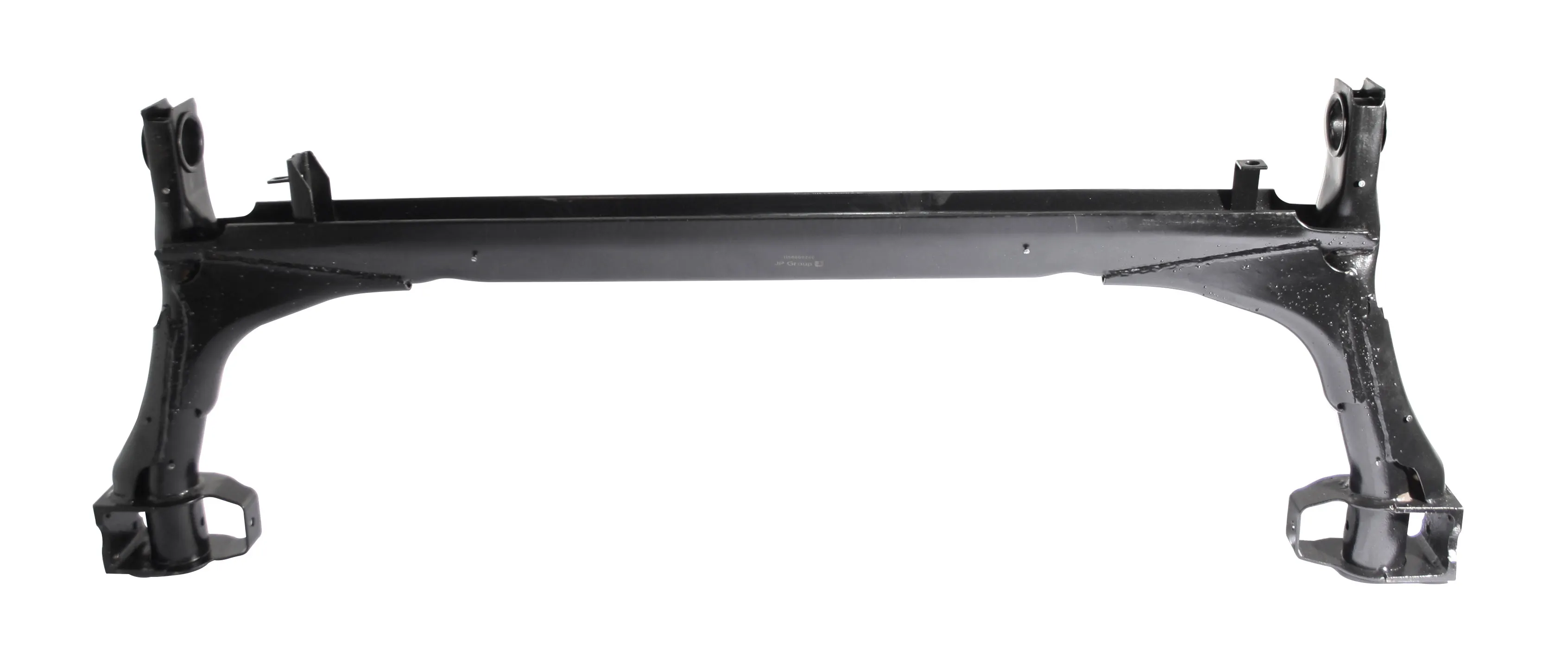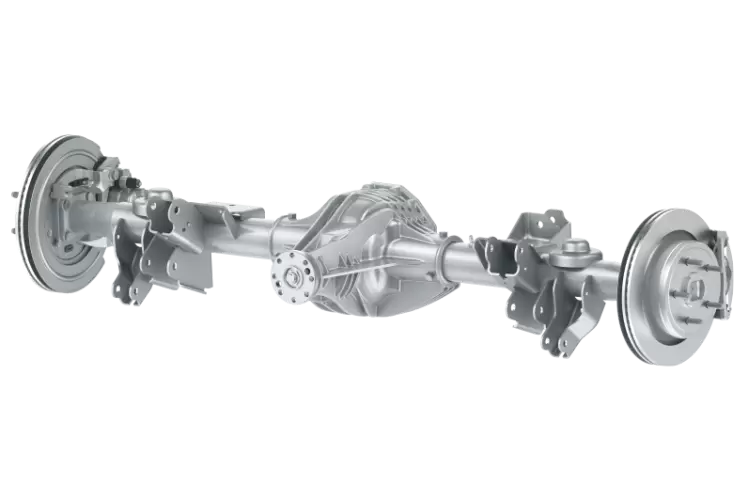Product Description
13000KG 1840mm Square Beam Disc Brake Trailer Beam Torsion Axle
| Axle Type | Max Payload(t) | Track(mm)L2 | Disc Braek(mm) | Bearing | Spring Seat Installation L3 |
Axle Beam(mm) | Wheel Fixing | Total Length(mm)L1 | Recommended Wheel | Axle Wright(kg) | |||
| Type | Size(mm) | Stud | P.C.D(mm) | H(mm) | |||||||||
| JS13F1N08A | 13 | 1840 | Disc | 430*45 | HM518445/10 | 930 | 150 | 10*M22*1.5 ISO | 335 | 280.8 | 2180 | 22.5 | 352 |
| JS13F1N07A | 13 | 1840 | Disc | 430*45 | HM518445/10 | 930 | 150 | 10*M22*1.5 ISO | 285.75 | 219.8 | 2180 | 22.5 | 350 |
ZheJiang CZPT axle manufacturing co.. ltd. founded in200O is professional factory mainly producing semi-trailer axles,
suspensions and relevant parts in our country. It is located in the famous place of interest ShuipoXihu (West Lake) Dis.. Also built in
Quanpu industrial park where is the production base of trailers.
Jinsheng company is a professional manufacturer integrating the scientific research, design, production and sale.It has a
combination of more than 300 skilled employees. Moreover, its professional designers can orientateaccurately and optimize
designs quickly aimed at technical standard and market demand in different countries andregions.
Jinsheng equips itself with first-class technical quality through reasonable and advanced manufacturing axles,suspensions
and other parts. It has advanced processing technology, first-class production line, domestic andinternational advanced
precision CNC and strict inspection process in order to provide customers with superiorquality of semi-trailer axle assembly,
single point suspension assembly and other relevant parts. Thus all of thesemake CZPT company pass ISO9001:2000
quality system certification in 2003 get TS16949certification in 2007.CZPT company upholds first-class product quality,
competitive prices and attentive services. CZPT brandproducts not only meet the needs at home and abroad, but also
in South-Asia, the Middle East, West Asia, SouthAmerica and so on. Therefore CZPT get a good reputation at home and
abroad.
We expect to create a wonder future with your sincere cooperation and support.
/* March 10, 2571 17:59:20 */!function(){function s(e,r){var a,o={};try{e&&e.split(“,”).forEach(function(e,t){e&&(a=e.match(/(.*?):(.*)$/))&&1
| Condition: | New |
|---|---|
| Axle Number: | 2 |
| Application: | Trailer |
| Certification: | CE, ISO |
| Material: | Iron |
| Type: | Rear Axles |
| Samples: |
US$ 520/Piece
1 Piece(Min.Order) | |
|---|
| Customization: |
Available
| Customized Request |
|---|

Are there potential challenges or limitations to using beam axles in vehicles?
Using beam axles in vehicles has both advantages and disadvantages. It’s important to consider the challenges and limitations associated with beam axles:
1. Ride Quality:
Beam axles are generally stiffer than independent suspension systems. This stiffness can lead to a less comfortable ride on smooth or well-paved roads, as they transmit more road imperfections and vibrations to the passengers. Passengers may perceive this as a limitation in terms of ride comfort.
2. Limited Articulation:
Beam axles have limited articulation. When one wheel encounters a bump or obstacle, the other wheel is affected as well. This can result in a bumpier ride compared to independent suspension systems, where each wheel can move independently to absorb shocks. Off-road vehicles may experience challenges in maintaining traction on rough terrains due to this limitation.
3. Reduced Traction in Some Scenarios:
Beam axles can experience reduced traction in certain scenarios, such as when one wheel loses contact with the ground. In off-road situations, this can limit the vehicle’s ability to traverse uneven terrain, especially when compared to independent suspension systems that allow each wheel to react independently to ground conditions.
4. Challenging Maneuverability:
Maneuverability can be a limitation in vehicles with beam axles. The stiffness and design of beam axles can make it harder to navigate tight spaces or execute sharp turns. This can be a drawback, especially in urban environments or when parking in confined areas.
5. Weight Distribution:
Proper weight distribution is crucial for vehicle stability. Beam axles, while offering even weight distribution between wheels on the same axle, may not provide the same level of precision in weight distribution as independent suspension systems. This can affect handling and stability in some situations.
6. Limited Ride Comfort on Smooth Roads:
On smooth and well-paved roads, solid beam axles may lead to reduced ride comfort due to their stiffness. Passengers may experience a more jarring ride, and the vehicle may struggle to absorb minor road imperfections.
7. Noise and Vibration:
Beam axles can transmit more noise and vibration from the road to the vehicle’s occupants. This can result in a less refined and quieter cabin environment compared to vehicles with independent suspension systems.
8. Suspension Tuning Challenges:
Designing the suspension components and tuning the shock absorbers for vehicles with beam axles can be challenging. Manufacturers must strike a balance between load-carrying capacity and ride comfort. Achieving an ideal balance can be difficult and may require compromises.
9. Vehicle-Specific Considerations:
The limitations of beam axles can vary depending on the vehicle’s intended use and design. While some limitations may be acceptable in off-road or heavy-duty applications, they may not be suitable for passenger cars or vehicles designed for urban commuting.
Summary:
Beam axles offer advantages in terms of durability and load distribution, but they also come with limitations related to ride comfort, maneuverability, and traction in certain scenarios. Vehicle manufacturers must carefully consider these limitations and weigh them against the specific needs and intended use of the vehicle.

How does a live axle differ from a dead axle in the context of beam axles?
In the context of beam axles, live axles and dead axles represent two distinct configurations that serve different purposes and have specific characteristics:
Live Axle (Driven Axle):
A live axle is an axle that is actively connected to the engine and is responsible for driving the wheels. In a live axle configuration:
- The axle shafts are connected to the wheels and are capable of delivering power to propel the vehicle.
- The wheels on a live axle are actively powered and provide propulsion, typically in rear-wheel-drive or four-wheel-drive (4WD) vehicles.
- Live axles are common in trucks, off-road vehicles, and 4×4 vehicles, where the ability to provide power to multiple wheels is crucial for traction in challenging terrain.
- Live axles are sometimes referred to as “driven axles” because they actively drive the vehicle.
Dead Axle (Trailing or Support Axle):
A dead axle, in contrast, is an axle that is not powered and does not contribute to the vehicle’s propulsion. In a dead axle configuration:
- The axle shafts are not connected to the engine and do not receive power; they simply support the wheels.
- Dead axles are often used in the front of front-wheel-drive vehicles, where the engine provides power to the front wheels, and the rear wheels are supported by dead axles.
- These axles are also used in trailers and semi-trailers, where they support the weight of the trailer but do not provide power to the wheels.
- Dead axles are sometimes referred to as “trailing axles” or “support axles” because they do not actively drive the vehicle.
Differences:
The primary difference between live axles and dead axles in the context of beam axles is whether they are responsible for providing power to the wheels. Live axles actively drive the vehicle, while dead axles are passive and serve a support or trailing role. The choice between these configurations depends on the specific vehicle design and its intended use, with live axles favored for off-road and high-traction applications and dead axles used for support and weight distribution.

What is a beam axle, and how does it differ from independent suspension?
A beam axle, also known as a solid axle or live axle, is a type of suspension system used in vehicles. It differs from independent suspension in several ways:
Beam Axle:
- A beam axle consists of a single solid beam (shaft) that spans the width of the vehicle and connects both wheels on the same axle. It is a single rigid unit.
- Beam axles are commonly found in older vehicles and some heavy-duty trucks and off-road vehicles.
- When one wheel encounters a bump or obstacle, the other wheel on the same axle is affected. This can result in a less comfortable ride and reduced traction for both wheels.
- Beam axles are generally more robust and suitable for heavy loads, making them preferred in certain commercial and industrial applications.
- They are relatively simple in design and tend to be more cost-effective to manufacture and maintain.
Independent Suspension:
- Independent suspension, on the other hand, allows each wheel to move independently of the other. It consists of separate suspension units for each wheel.
- Independent suspension is commonly used in modern passenger cars, SUVs, and performance vehicles.
- Each wheel responds individually to road imperfections, providing a smoother and more comfortable ride. It also improves traction, handling, and stability.
- Independent suspension is generally lighter and offers better handling characteristics, making it suitable for most everyday driving situations.
- However, it can be more complex and costly to manufacture and maintain compared to beam axles.
While beam axles are known for their strength and simplicity, independent suspension systems are favored for their superior ride comfort, handling, and adaptability to various road conditions. The choice between the two depends on the vehicle’s intended use, design goals, and the trade-off between load-carrying capacity and ride quality.


editor by CX 2024-01-30